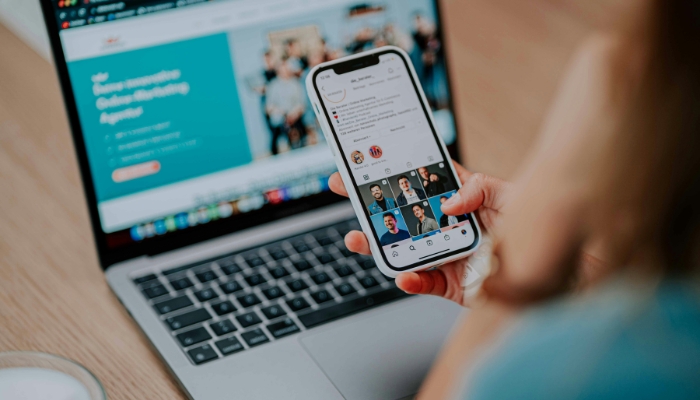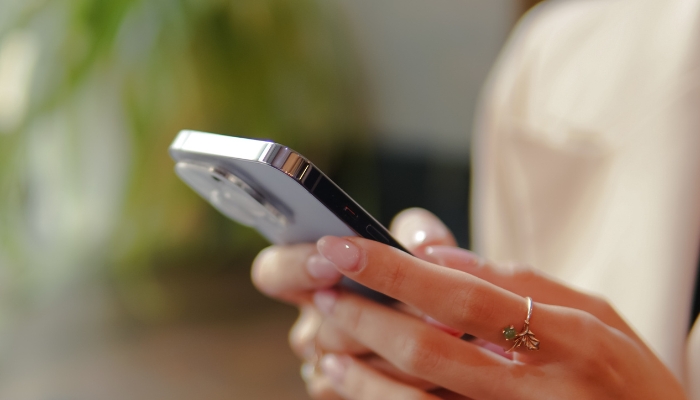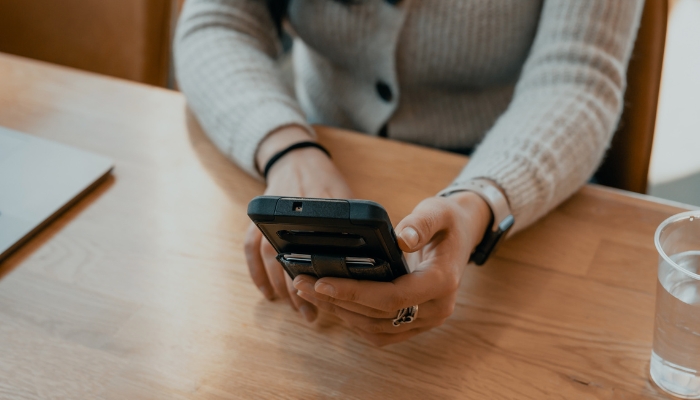
Ever wondered why are dating apps so expensive? It’s not just you – they’re indeed getting pricier.
Dating apps are often seen as expensive due to their subscription models and in-app purchases. These costs are used to maintain the app’s quality, provide advanced features, and ensure a better user experience. However, this can make them less accessible to some users.
Behind swipes and matches, there’s a complex business model at work. From user acquisition costs to technological upkeep, various factors drive up the pricing. Let’s delve into why your quest for love might be costing more than you’d expect.
Table of contents
- The Rising Popularity of Dating Apps
- The Business Model Behind Dating Apps
- Features and Premium Packages Pricing
- The Cost of User Acquisition
- Technological Developments and Maintenance Costs
- Understanding User Behavior: The Psychology Behind Pricing in Dating Apps
- Traditional Dating vs. Dating Apps: A Cost Comparison
- Conclusion
- FAQs: Why Are Dating Apps So Expensive
The Rising Popularity of Dating Apps
You’ve probably noticed the surge in popularity of dating apps over the last few years, but you might be wondering why this is happening. The rising popularity of dating apps can largely be credited to the convenience and efficiency they offer. They’ve transformed the dating landscape, from what was once a time-consuming and often frustrating process, into a quick, easy, and fun experience.
The online dating service industry has seen significant growth, particularly among the most common dating apps, with the dating app market now worth an estimated $3 billion in the U.S alone. This is driven by a rapidly growing base of active users. In 2020, major dating apps reported a 18% increase in downloads. This trend doesn’t appear to be slowing down either, with a projected annual growth rate of 11.6% over the next four years.
In-depth analysis of user behavior reveals that the average user spends about 90 minutes a day on these apps. This high level of engagement is a testament to the effectiveness of these platforms.
In a nutshell, the rising popularity of dating apps can be attributed to the unique blend of convenience, efficiency, and fun they offer.
The Business Model Behind Dating Apps
Despite the apparent convenience and efficiency of these apps, you might be wondering about the business model behind dating apps that contributes to their high costs. Let’s dive straight into the mechanics of it.
- Premium Subscription: Many dating apps offer a free basic service, but they also offer a premium subscription. This model allows app users to use the service for free, but if they want additional features, they need to pay.
- User Base Monetization: A significant portion of the revenue comes from the user base itself. This can include displaying advertisements or selling data to third-party companies.
- In-app Purchases: Other than subscription fees, dating apps also generate income through in-app purchases. This can range from boosts to make your profile more visible, to purchasing virtual gifts for other users.
- Partnerships and Affiliates: Apps also enter into partnerships with businesses, where they earn a commission for referring their users to those businesses.
Features and Premium Packages Pricing

Understanding the business model behind dating apps, you’re now ready to dive into the pricing of features and premium packages offered by these services. Features and premium packages pricing play a significant role in why dating apps seem expensive.
Most dating apps operate on a freemium model. You can sign up and use basic features for free, but to access additional features, you need a premium membership. The costs of these membership plans can vary widely. For instance, one premium dating app may charge $10 per month, while another could be as high as $40.
The premium versions offer features like ad-free experience, priority in search results, unlimited likes, and the ability to see who’s viewed your profile, among others. These premium features provide an enhanced user experience, which justifies the cost for many.
However, it’s important to note that these apps invest significantly in technology, security, and user experience enhancements. Therefore, the pricing is also a way to cover these costs and sustain the business. Analyzing the features and premium packages pricing can help you understand whether the premium versions offer value for your money. So, before upgrading, consider what you’re getting in return.
The Cost of User Acquisition
Let’s dive into another big factor driving up the cost of dating apps – user acquisition. It’s not just about creating an app; it’s about getting people to use it. The cost of user acquisition can be quite high and is a substantial part of why dating apps are expensive.
- Advertising: Dating apps invest heavily in marketing to attract new users. This includes paying for ad spots on social media, search engines, and other platforms. It’s a continuous and costly process.
- Free Trials and Discounts: To entice new users, dating apps often offer free trials or hefty discounts. While this can attract users, it’s a cost that the company absorbs.
- Tech Development: To keep users engaged, dating apps must constantly innovate, improve, and update their technology. This ongoing development is another considerable expense.
- Affluent Users: Dating apps target affluent users who are willing to pay for their services. However, acquiring these high-value users is costly as they’re often bombarded with premium offerings from various apps.
Understanding these factors gives insight into the high cost of user acquisition and why dating apps are more expensive than you might initially think.
Technological Developments and Maintenance Costs
Now, you might be wondering how technological developments and maintenance costs can add up and drive the cost of dating apps sky-high. Let’s delve into this aspect.
Cutting-edge technological developments are crucial for dating apps to stay competitive. In an increasingly digital world, online dating platforms need to consistently innovate to enhance user experience. This includes developing advanced features like AI-based matchmaking, sophisticated algorithms, and high-level data encryption for user security. However, these innovations don’t come cheap. They require significant amounts of time, expertise, and financial resources, thus contributing to the high cost of these apps.
Now, let’s consider maintenance costs. Like any other software, dating apps require regular updates and fixes to keep them running smoothly. These updates are necessary to fix bugs, improve performance, and incorporate new features. But again, this involves a team of skilled professionals working round the clock, which adds to the expenses.
To summarize, the relentless pursuit of technological advancements and the ongoing maintenance needs can cause the cost of dating apps to soar. This explains why your favorite online dating platforms might seem so expensive.
Understanding User Behavior: The Psychology Behind Pricing in Dating Apps

Dating apps have revolutionized the way we seek potential partners. However, the pricing strategies of these apps, such as Tinder Plus, Tinder Gold, and Bumble Boost, play a significant role in influencing user behavior and choices.
When a user sees a price tag on a popular dating app, it triggers a complex set of psychological responses.
The Value Perception of Premium Services
Users often associate the cost of premium services with the likelihood of finding a compatible match. Apps like Tinder and Hinge offer special features in their paid versions.
Which are perceived to enhance the chances of finding a long-term relationship. This perception is rooted in psychological principles, where a higher price is often equated with a higher-quality experience.
Decision-Making and Emotional Investment
The decision to upgrade to a paid service like Tinder Platinum or Bumble Premium involves not just financial but also emotional investment.
Users who pay for these services are often more motivated daters, actively seeking future partners. This commitment of real money can lead to a more serious approach in the dating game, potentially leading to a higher success rate.
The Impact of Unlimited Access and Exclusive Features
Users unlimited access to features such as super likes, mutual likes, and detailed profiles can significantly impact user engagement. These features, available in monthly plans or through a 6-month subscription, offer users a sense of control and empowerment in their search for actual matches.
The access to user activity and stronger matches provided by these subscriptions can enhance user experience, leading to prolonged engagement on the app.
Psychological Impact of Free vs. Paid Features
The basic version of dating apps often comes with limitations, which can affect user experience and perceived chances of finding a compatible match. In contrast, paid features, often seen as an alluring option, create a sense of exclusivity and effectiveness.
This is particularly true for users seeking a committed relationship or a life partner, where the investment in a premium experience is seen as a worthwhile investment.
In conclusion, the pricing strategies of dating apps like Coffee Meets Bagel and Bumble Travel play a crucial role in shaping user behavior and engagement. By offering tiered services, from a basic membership to an ad-free premium version, these apps tap into the psychological aspects of consumer behavior, influencing both the user’s experience and their success in finding meaningful connections.
Traditional Dating vs. Dating Apps: A Cost Comparison

The evolution of finding potential partners has shifted dramatically with the advent of dating apps like Tinder Plus, Bumble Boost, and Coffee Meets Bagel.
This shift brings into question the cost-effectiveness of these platforms compared to traditional dating methods, and also raises the issue of ‘why are dating apps bad‘ when compared to more traditional forms of dating. Understanding the financial implications of both avenues can help single persons and motivated daters make informed choices.
The Financial Dynamics of Traditional Dating
Traditional dating often involves expenses like dining out, movie tickets, and other social activities. These costs can accumulate quickly, especially in the pursuit of a long-term relationship. For instance, a simple dinner date can cost significantly more than a monthly plan on a dating app.
Moreover, traditional dating doesn’t guarantee a compatible match, meaning these costs could be incurred repeatedly without any assurance of a successful relationship.
The Cost Structure of Dating Apps
In contrast, dating apps offer various pricing tiers, from a basic version to premium options like Tinder Gold or Bumble Premium. These apps provide access to matches and detailed profiles at a fraction of the cost of a single traditional date.
While some may argue about the financial cost of premium features, these are often a worthwhile investment for those seeking specific relationship goals.
Evaluating the Return on Investment
The return on investment in dating apps can be substantial. For a relatively low base rate, users gain access to a vast abundance of users, increasing the likelihood of finding a compatible match.
Additionally, features like photo verification, voice messages, and robust search options enhance the quality of matches, something that traditional dating doesn’t typically offer.
The Efficiency of Dating Apps
Dating apps also save time and effort, which can be translated into cost savings. The ability to filter potential matches by interests, location, and other preferences streamlines the dating process, reducing the time and money spent on unfruitful dates. This efficiency is a significant advantage over traditional dating, where such filtering is not as straightforward.
In conclusion, while traditional dating has its charm, dating apps offer a more cost-effective and efficient way to meet potential partners. The ability to access a wider pool of potential matches, along with the convenience and variety of features offered by platforms like Tinder and Hinge, makes them an attractive option for contemporary daters.
Whether seeking casual encounters or a committed relationship, dating apps provide a financially viable alternative to the traditional dating scene.
Conclusion
So, you see, dating apps aren’t just cashing in on your quest for love. Their hefty price tags are justified by their business model, premium features, user acquisition costs, and tech maintenance.
As these apps continue to innovate and expand, they’re likely to remain a pricey yet indispensable tool in your dating arsenal. It’s a small price to pay for the potential of finding your perfect match, wouldn’t you agree?
FAQs: Why Are Dating Apps So Expensive
Why do dating apps charge for premium features?
Dating apps like Tinder Plus and Bumble Boost charge for premium features to offer a more enhanced and higher-quality experience. These features, such as unlimited likes, super likes, and access to detailed profiles, require additional resources and technology to maintain. The charges help cover these operational costs and support continuous app improvement.
Is it worth paying for dating apps?
Whether it’s worth paying for dating apps depends on your personal dating goals and usage patterns. For those actively seeking a long-term relationship or specific types of potential matches, the premium service can be a worthwhile investment. It offers advanced features like robust search options and ad-free browsing, which can enhance the user experience and increase the chances of finding a compatible partner.
Can I still meet people on dating apps without paying?
Yes, you can meet people on dating apps without paying. Most apps offer a basic version that allows users to create a profile, browse, and match with others. However, the free version may have limitations like a restricted number of daily likes or limited access to matches.
How do the costs of dating apps compare to traditional dating?
Generally, the costs of dating apps are lower compared to traditional dating expenses. Traditional dating often involves costs like meals, movie tickets, and other activities, which can add up quickly. In contrast, dating apps offer a more cost-effective way to meet potential partners, with options ranging from free basic memberships to moderately priced premium subscriptions.